Travelers 2010 Annual Report Download - page 55
Download and view the complete annual report
Please find page 55 of the 2010 Travelers annual report below. You can navigate through the pages in the report by either clicking on the pages listed below, or by using the keyword search tool below to find specific information within the annual report.-
 1
1 -
 2
2 -
 3
3 -
 4
4 -
 5
5 -
 6
6 -
 7
7 -
 8
8 -
 9
9 -
 10
10 -
 11
11 -
 12
12 -
 13
13 -
 14
14 -
 15
15 -
 16
16 -
 17
17 -
 18
18 -
 19
19 -
 20
20 -
 21
21 -
 22
22 -
 23
23 -
 24
24 -
 25
25 -
 26
26 -
 27
27 -
 28
28 -
 29
29 -
 30
30 -
 31
31 -
 32
32 -
 33
33 -
 34
34 -
 35
35 -
 36
36 -
 37
37 -
 38
38 -
 39
39 -
 40
40 -
 41
41 -
 42
42 -
 43
43 -
 44
44 -
 45
45 -
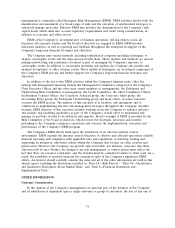 46
46 -
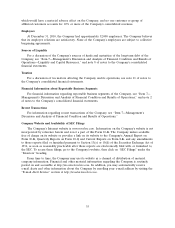 47
47 -
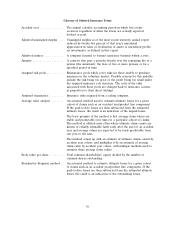 48
48 -
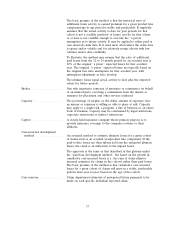 49
49 -
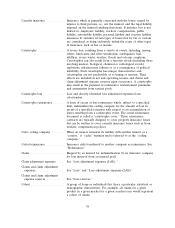 50
50 -
 51
51 -
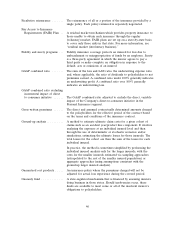 52
52 -
 53
53 -
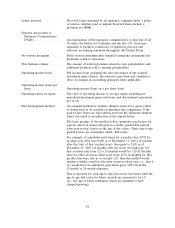 54
54 -
 55
55 -
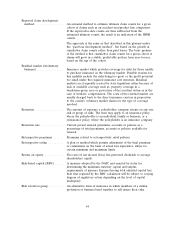 56
56 -
 57
57 -
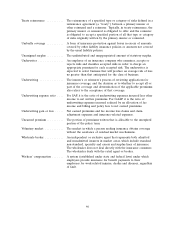 58
58 -
 59
59 -
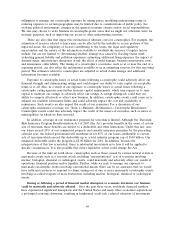 60
60 -
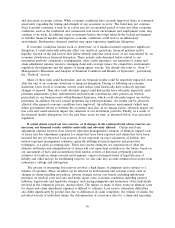 61
61 -
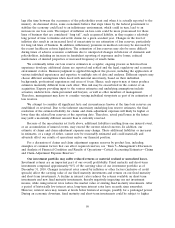 62
62 -
 63
63 -
 64
64 -
 65
65 -
 66
66 -
 67
67 -
 68
68 -
 69
69 -
 70
70 -
 71
71 -
 72
72 -
 73
73 -
 74
74 -
 75
75 -
 76
76 -
 77
77 -
 78
78 -
 79
79 -
 80
80 -
 81
81 -
 82
82 -
 83
83 -
 84
84 -
 85
85 -
 86
86 -
 87
87 -
 88
88 -
 89
89 -
 90
90 -
 91
91 -
 92
92 -
 93
93 -
 94
94 -
 95
95 -
 96
96 -
 97
97 -
 98
98 -
 99
99 -
 100
100 -
 101
101 -
 102
102 -
 103
103 -
 104
104 -
 105
105 -
 106
106 -
 107
107 -
 108
108 -
 109
109 -
 110
110 -
 111
111 -
 112
112 -
 113
113 -
 114
114 -
 115
115 -
 116
116 -
 117
117 -
 118
118 -
 119
119 -
 120
120 -
 121
121 -
 122
122 -
 123
123 -
 124
124 -
 125
125 -
 126
126 -
 127
127 -
 128
128 -
 129
129 -
 130
130 -
 131
131 -
 132
132 -
 133
133 -
 134
134 -
 135
135 -
 136
136 -
 137
137 -
 138
138 -
 139
139 -
 140
140 -
 141
141 -
 142
142 -
 143
143 -
 144
144 -
 145
145 -
 146
146 -
 147
147 -
 148
148 -
 149
149 -
 150
150 -
 151
151 -
 152
152 -
 153
153 -
 154
154 -
 155
155 -
 156
156 -
 157
157 -
 158
158 -
 159
159 -
 160
160 -
 161
161 -
 162
162 -
 163
163 -
 164
164 -
 165
165 -
 166
166 -
 167
167 -
 168
168 -
 169
169 -
 170
170 -
 171
171 -
 172
172 -
 173
173 -
 174
174 -
 175
175 -
 176
176 -
 177
177 -
 178
178 -
 179
179 -
 180
180 -
 181
181 -
 182
182 -
 183
183 -
 184
184 -
 185
185 -
 186
186 -
 187
187 -
 188
188 -
 189
189 -
 190
190 -
 191
191 -
 192
192 -
 193
193 -
 194
194 -
 195
195 -
 196
196 -
 197
197 -
 198
198 -
 199
199 -
 200
200 -
 201
201 -
 202
202 -
 203
203 -
 204
204 -
 205
205 -
 206
206 -
 207
207 -
 208
208 -
 209
209 -
 210
210 -
 211
211 -
 212
212 -
 213
213 -
 214
214 -
 215
215 -
 216
216 -
 217
217 -
 218
218 -
 219
219 -
 220
220 -
 221
221 -
 222
222 -
 223
223 -
 224
224 -
 225
225 -
 226
226 -
 227
227 -
 228
228 -
 229
229 -
 230
230 -
 231
231 -
 232
232 -
 233
233 -
 234
234 -
 235
235 -
 236
236 -
 237
237 -
 238
238 -
 239
239 -
 240
240 -
 241
241 -
 242
242 -
 243
243 -
 244
244 -
 245
245 -
 246
246 -
 247
247 -
 248
248 -
 249
249 -
 250
250 -
 251
251 -
 252
252 -
 253
253 -
 254
254 -
 255
255 -
 256
256 -
 257
257 -
 258
258 -
 259
259 -
 260
260 -
 261
261 -
 262
262 -
 263
263 -
 264
264 -
 265
265 -
 266
266 -
 267
267 -
 268
268 -
 269
269 -
 270
270 -
 271
271 -
 272
272 -
 273
273 -
 274
274 -
 275
275 -
 276
276 -
 277
277 -
 278
278 -
 279
279 -
 280
280 -
 281
281 -
 282
282 -
 283
283 -
 284
284 -
 285
285 -
 286
286 -
 287
287 -
 288
288 -
 289
289 -
 290
290 -
 291
291 -
 292
292
 |
 |
A given accident year’s cumulative losses are then projected to
ultimate by multiplying current cumulative losses by successive
age-to-age link ratios up to that future age where growth is
expected to end. For example, if growth is expected to end at
60 months, then the ultimate indication for an accident year with
cumulative losses at 12 months equals those losses times a 12 to
24 month link ratio, times a 24 to 36 month link ratio, times a 36 to
48 month link ratio, times a 48 to 60 month link ratio.
Advanced applications of the method include adjustments for
changing conditions during the historical period and anticipated
changes in the future.
Pool..................... An organization of insurers or reinsurers through which particular
types of risks are underwritten with premiums, losses and expenses
being shared in agreed-upon percentages.
Premiums................. The amount charged during the year on policies and contracts
issued, renewed or reinsured by an insurance company.
Property insurance .......... Insurance that provides coverage to a person or business with an
insurable interest in tangible property for that person’s or business’s
property loss, damage or loss of use.
Quota share reinsurance ...... Reinsurance wherein the insurer cedes an agreed-upon fixed
percentage of liabilities, premiums and losses for each policy
covered on a pro rata basis.
Rates .................... Amounts charged per unit of insurance.
Redundancy ............... With regard to reserves for a given liability, a redundancy exists
when it is estimated or determined that the reserves are greater
than what will be needed to pay the ultimate settlement value of
the related liabilities. Where the redundancy is the result of an
estimate, the estimated amount of redundancy (or even the finding
of whether or not a redundancy exists) may change as new
information becomes available.
Reinstatement premiums ...... Additional premiums payable to reinsurers to restore coverage
limits that have been exhausted as a result of reinsured losses under
certain excess-of-loss reinsurance treaties.
Reinsurance ............... The practice whereby one insurer, called the reinsurer, in
consideration of a premium paid to that insurer, agrees to
indemnify another insurer, called the ceding company, for part or
all of the liability of the ceding company under one or more
policies or contracts of insurance which it has issued.
Reinsurance agreement ....... A contract specifying the terms of a reinsurance transaction.
Renewal premium change ..... The estimated change in average premium on policies that renew,
including rate and exposure changes.
Renewal rate change ......... The estimated change in average premium on policies that renew,
excluding exposure changes.
43
